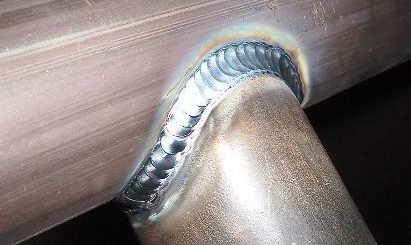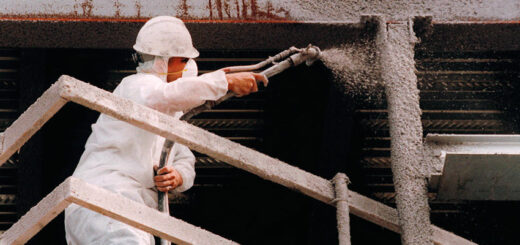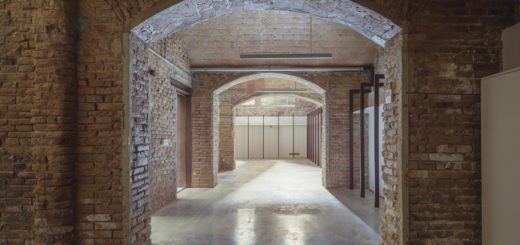Pile Foundation Construction Problems and Solutions
Pile foundation problems and solutions for the same are discussed in this article. Pile construction is a wide subject that needs to study in-depth to know the shortcomings in the construction.
However, there is a key aspect to be remembered and attended during the construction of piles to avoid major issues in the construction.
We can not observe the condition of the pile or what happens underground with the naked eye. What we can do is just to follow the correct construction procedures to make sure we are doing the quality control and quality assurance.
Though the pile foundations are designed by an expert in the subject, the pile could fail if not constructed correctly.
Let’s discuss each of the construction problems in detail.
Pile Setting Out
One of the most important works to be done at the beginning of the construction of a pile.
If this goes wrong, everything that we do will be subjected to the initial error.
It is true that we can not always maintain the precision of the setting out to the exactly coordinated given in the drawings. However, at least, it shall be made sure to be with the acceptable limit of tolerance.
In most of the guidelines, pile construction tolerance is specified as 75mm. However, different guidelines specify different ranges based on the nature of construction.
The following table states the range of tolerances acceptable in the construction.
| Code | Allowable Tolerance |
| ACI-336 | 4% of diameter or 75mm; whichever less |
| BS EN 1536 | 100mm; for pile diameter(D) ≤ 1000mm 0.1D for 1000<D≤1500 150mm D>1500 Design for rake less than 1 in 15 limit to 20mm/m Design with rake of between 1 in 4 and 1 in 15 limit to 40mm/m |
| CP4 | 75mm |
| BS 8004 | Not more than 1 in 75 from the vertical or 75mm Deviation of up to 1 in 25 permitted for bored piles drilled at rakes of up to 1 in 4 |
If the pile tolerance is within the limit, the construction of the pile is accepted. The structural designer shall be considered the acceptable tolerance in his design.
For example, if the acceptable tolerances for pile deviation are 75mm, the superstructure shall be designed for the same. We cannot change the location of the column through the pile is shifted.
Then we have to design the ground beam if there are two or single pile to carry the column loads. When there are three or more piles, it could be considered for the piles, and an increase in the pile load due to the movement towards the column shall be taken in to account when pile capacity is evaluated.
When the deviation is greater than the acceptable limit for any type of pile arrangement in the pile cap, it shall be checked after the construction, and necessary adjustment shall be made. Designing the ground beams for the eccentricity where possible, check the pile capacity increase with the movement of piles, check the pile caps for new eccentricity, etc should be done by the designer.
Excavation of Pile and Socketing
There are many issues that we need to look into when the pile excavation or drilling is done.
Let’s discuss each of them one by one.
- Deviation of the Steel Casing
The steel casing is placed when the condition of the groud is very weak and collapsing cannot be stored by the bentonite fill. The depth of the casing could be up to the termination of the soft soil such as peat.
The Center of the casing could deviate when place due to the collapsing during its placement. Even though the center of the casing is checked after it placed, it could be inclined.
In addition, during the excavation, the position of the casing could be deviated from its original position due to the lack of lateral stiffness of the soil.
It could be avoided by inserting the casing up to a reasonable depth in the hard soil layer and checking the position of the casing before and after concreting.
Tolerances could be checked as per the relevant standard or as indicated in the above table.
- Collapse of the Excavtion
Collapsing of the soil is inevitable in the pile foundation construction. However, it can be minimized by controlling the density of the bentonite slurry.
Periodic checking shall be done to make sure the density is within the acceptable limit.
- Excessive Water in the Pile
Since the excavation continues beyond the groundwater table, water will seep into the excavation.
The bentonite level shall be maintained regularly to avoid the water seeping to the pile. Since the density of the bentonite is higher there is less chance of movement of water.
In addition, the density of the bentonite shall be checked regularly, and if required necessary adjustment shall be done the maintain the required density of bentonite.
- Lateral Movement and Uplifting of Adjacent Piles
In general, the spacing of the pile is maintained around 2.5 – 3 times the pile diameter.
There are possibilities for the movement of surrounding piles when the pile casings are driven.
It shall be done with much care and doing it with much control, lateral movement could be minimized/avoided.
- Settlements
There will be excessive vibration in the ground due to the pile driving.
Even though it maintains the vibration within the acceptable limit, still the effect of the vibration could cause settlement of the adjacent structures.
Especially, the structures founded on shallow foundations could settle in the construction of the pile. Further, excessive vibration could cause a severy issue.
The settlement of the structure may lead to cracking and even the old structure or improperly constructed structures could collapse.
Therefore, based on the nature of construction, vibration shall be minimized as much as possible. The use of new tools, the use of electric drilling machines, etc could reduce the vibration.
- In Adequate Socketing and Termination
Pile design drawings specify the socketing depth in the drawings. However, it is a challenging task to decide the starting point and termination point of the socketing depth.
The socketing depth of a pile is decided based on several factors. Some of them are information gathered from the borehole log, rate of the penetration in the rock, rock sample observation, etc.
Further, onsite tests such a point load test could be done to find the strength of the rock. It can be correlated with the end bearing of the rock. Thus, we can identify the condition of the rock, and accordingly, the termination could be decided.
- Poor Cleaning of Pile Toe
It is a must to clean the pile to adequately. Cleaning of the pile is called the flushing.
It can be done based on the parameters obtained by testing the bentonite. We can not see the toe of the pile. So how we decide the pile is cleaned.
The bentonite in the excavation taken out and cleaned by a machine and remove the washed sand and mud. It gained pumped from the top of the excavation. Bentonit taken for cleaning from the toe of the pile.
This process is continued until it satisfies that there is no mud/sand in the bentonite.
The tests such as mud balance, marsh balance, and sand content are tested in the flushing process.
| Characteristics for Bentonite Suspensions | |||||
| Property | Unit | Stages | Test Equipment | ||
| Fresh | Ready for Re-use | Before Concreting | |||
| Density | g/ml | <1.10 | <1.25 | <1.15 | Mud Balance |
| Marsh Viscosity (946 ml) | sec | 32-50 | 32-60 | 32-50 | Marsh Funnel |
| Sand Content | % | N/A | N/A | <4 | Sand content |
| pH | 7 to 11 | 7 to 12 | n.a. | pH meter | |
The ranges specified in the above table could be maintained before concreting. The values may vary from specification to specification. The project specification shall be referred for the date.
Concreting Problems
The issues usually observed during construction and are highlighted as follows.
- In Adequate Strenght of the Concrete
Generally, piles are cast from the grade 30 concretes. This value may vary from country to country.
Inadequate compressive strength of the concrete in the pile leads to severe issues in the construction.
Since the pile is an underground structure, it is very difficult to rectify. If the real application of load exceeds the pile capacity, additional piles could be constructed.
- Voids in the Concrete
Since the self compacting concrete is poured into the pile, no vibration is required. Further, due to the depth of the pile, it is very difficult to vibrate the concrete for the better commotion.
Due to the construction issues, cavities could be created in the pile. It could be due to the poor quality of the concrete and inconsistency in the workability of the concrete.
Regular checking and monitoring the quality of concrete could avoid these issues.
- Mixing Concrete with Bentonite
Concrete is poured in a way that it does not mix with the bentonite.
Initially, the tremie place in the tore of the excavated pile. Then concrete is poured into the tremie. After that tremie is lifted slowly allowing the concrete to flow out.
Then again the tremie is filled with concrete. Then the tremie is slightly lifted allowing concrete to move out gradually. This process is to continue in the pile concreting.
We always keep the end of the tremie within the fresh concrete and we never lift the tremie into the top level of the pile concrete during the concreting process.
We try to retain the end of the tremie at least 1-1.5m within the fresh concrete to avoid fresh concrete mixing with bentonite.
- Bulging and Necking
Concrete could bulge or it could necking during the construction.
Necking of the pile cold exposes the reinforcement cage and it leads to reduce the cross-section area of the pile.
Reduction of the pile cross-sectional area of the pile leads to reduce the load-carrying capacity of the pile.
- Rise of Temperature of Concrete
The rise of the temperature of the pile shall be tested at least at the beginning of the piling construction work.
The first pile could be checked from the strain gages and temperature variation could be monitored.
Based on the outcome of the data analysis, concrete could be adjusted.
Reinforcement Cage Movement
- Lifting of Reinforcement Cage
The reinforcement cage could be lifted if the rate of pouring of concrete is high. Therefore, concrete pouring shall be done in a controlled manner.
Once the case is lifted, we cannot lower it. Lifting the cage beyond the socketing length causes sever issue in the pile construction.
It could lead to abandoning the pile.
- Lack of Cover to the Reinforcement
Lateral movement of the reinforcement cage could lead to exposing it from one side. It could be due to the collapsing the soil from one side of the pile excavation.



